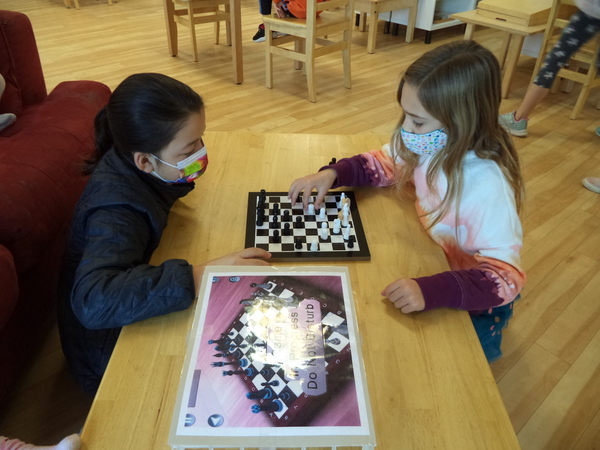(858) 759-0631
After the thorough preparation of the child's mind, hands, and attention through the work in the practical life and sensorial areas of the primary classroom, the teacher will notice when it seems the child is ready for the more academic area of language study. The child has learned sequencing with practical life work (among other things) and has used the sensorial materials to strengthen fingers and hands (again, among other things). Almost from the beginning, the child has been playing "sound games" with the teacher and other children. These teach children to discriminate between different sounds, creating "phonemic awareness." So on a special day, the teacher will ask the child, "I know you can find things that start with the "b" sound, but would you like to see what "b" looks like? Then starts the work with the sandpaper letters.
The sandpaper letters involve the tracing of the shape, vocalizing the sound, and the visual perception of each letter. So they call to all children, regardless of learning style. Children take this knowledge into their work with the movable alphabet where they "write" words that they compose by putting together sounds that they know. After some practice with this, the child will begin to "read" the words that they have written. Soon they are reading all sorts of things, like all the signs on all the stores as you drive around town.
Coming to the elementary with this background helps the child jump right into the elementary language program. One of the first exercises is that of the grammar boxes. This exercise isolates words by part of speech, putting them together first as phrases and then as sentences. As the child works with this material, he or she strengthens their reading skills and also gets real hands-on experience with how our language is constructed and just how flexible, but rigid, it is.
As reading skill builds, the child can read across the curriculum, taking in information on any subject that he or she finds interesting. They learn to write simple reports about what they have learned. Also, they are being exposed to the area of word study - compound words, prefixes, and suffixes, word families - just to name a few. When they get a little older, they study the syntax, or structure, of our language. By putting together sentences and then taking them apart to analyze them, they learn how our spoken and written language work.
The children are exposed to all types of writing as they are exposed to all types of reading. They read and write for information, for persuasion, to create fiction and narrate a story, and to write poetry. They learn about the history of spoken and written language and how it has progressed through the ages.
As with all areas of study in the elementary program, language study is integrated with all other areas throughout the curriculum.
It's all so simple and all so beautiful. Each small part is an element of the whole, just as each human being has a purpose and a part to play in the whole of humankind. We call this Cosmic Education.
-Mrs. Stone, Millipede Teacher

